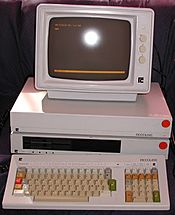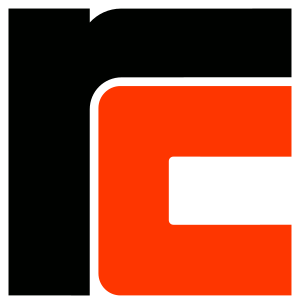Regnecentralen facts for kids
Regnecentralen (often called RC) was Denmark's very first computer company. It started on October 12, 1955. For many years, through the 1950s and 1960s, RC designed and built computers. At first, they made these machines for their own use. Later, they began selling them to other companies and organizations. Some of their computer designs were so good that they were still being sold in the 1980s! RC also created very fast machines that used paper tape, and they even built some computers under a special agreement with another company called Data General Nova.
Contents
How Regnecentralen Started
The idea for Regnecentralen began with a group of experts from the Danish Academy of Applied Sciences. This group was formed to learn about new electronic computing devices being developed in other countries. In 1952, they decided to create a special service. This service would use computers to help the Danish government, military, and researchers.
A person named Niels Ivar Bech led this group. They even got information about a computer called BESK, which was being designed in Sweden. The group decided to build their own version of the BESK computer to run their new service. So, in October 1955, Regnecentralen was officially formed to build and operate this machine.
The First Computers: DASK and GIER
The first computer they built was called DASK. It was a large machine that used special glass tubes called vacuum tubes. DASK was finished in 1956 and started working fully in February 1957.
After DASK, RC built an even newer computer in 1961 called GIER. This machine was much more modern because it used transistors instead of vacuum tubes. Transistors made computers smaller and more reliable. GIER was first used at the Institute of Geodetics on September 14, 1961. It became a very popular computer and was used at many universities in Denmark. Niels Ivar Bech also sold GIER machines to countries in Eastern Europe, like Czechoslovakia, Hungary, Poland, and Bulgaria. Later, they sold them to Romania, East Germany, and Yugoslavia.
Regnecentralen was also home to a famous computer scientist named Peter Naur. The DASK and GIER computers played an important part in creating a well-known programming language called ALGOL. After a big ALGOL meeting in Europe in 1959, RC started working on programs that could translate ALGOL code for their computers. They finished one for DASK in September 1961 and another for GIER in August 1962. Two RC employees, Christian Andersen and Peter Schyum Poulsen, even wrote one of the first books to teach people about ALGOL in 1961.
Making Other Computer Parts
To make their own computer service work faster, Regnecentralen also developed several high-speed machines for putting information into and getting information out of computers.
The RC 2000 Paper Tape Reader
One of their most successful inventions was the RC 2000 paper tape reader, which came out in 1963. This machine could read paper tape at an amazing speed of 5 meters (about 16 feet) per second! It could read 2,000 characters every second. The RC 2000 would store the information in a temporary memory. This allowed the computer to read the data when it was ready, without having to stop the tape.
Later, they made an improved version called the RC 2500. This machine was even faster, reading almost 7 meters (about 23 feet) of tape per second and reading 2,500 characters per second. The RC 2000 and 2500 became very important products for RC in the 1960s. They sold 1,500 of these machines all over the world! RC also added other related devices, like a fast machine for punching holes in paper tape and a special machine to change data between different formats. This helped make it easier for the main computer.
In 1964, Regnecentralen became a public company. This meant that parts of the company (shares) could be bought and sold. Most of these shares were owned by the company's biggest customers.
Newer Computers from RC
In the mid-1960s, RC started designing a smaller computer system. This new system used integrated circuits (tiny electronic chips) and was made for controlling machines in factories and for automation. They first designed it for a Danish company that wanted to automate a chemical factory in Poland.
The RC 4000 and Its Operating System
The RC 4000 computer design was ready in 1966 and finished for the factory the next year. When the RC 4000 was used with the right extra parts, like the RC 2000 paper tape reader, it became a very reliable minicomputer. It was sold across Europe. Later, in the mid-1970s, the RC 8000 used newer integrated circuits to make the RC 4000's features fit into a single computer cabinet. The very last computer in this series was the RC 9000. It was even smaller and much faster, able to do about 4 million instructions per second. The RC 9000 could run programs made for the RC 8000 or even the Unix operating system.
The RC 4000 is famous for its special operating system, which was created by Per Brinch Hansen. This system, called the RC 4000 multiprogramming system, was one of the first real examples of a computer system that used a very simple core program (called a kernel). Users could then add different programs to build up the entire system. Today, this idea is known as a microkernel.

RC also started selling another company's computer, the Data General Nova, under a special agreement in 1970. They called it the RC 7000. The next year, they introduced their own improved version called the RC 3600. These computers were similar to the RC 4000 but were used for smaller setups. The RC 3600 became a common computer in many Danish schools and universities.
In the 1980s, RC made several personal computers. These included the RC700 Piccolo, the RC750 Partner, and the RC759 Piccoline. These computers were mainly sold to Danish schools and some businesses in Denmark and other countries. The Piccolo used a Zilog Z80A CPU (the computer's main brain), while the Piccoline used an Intel 80186 processor.
Regnecentralen was bought by a company called International Computers Limited (ICL) in 1989.
Images for kids



